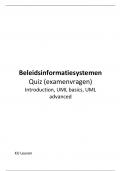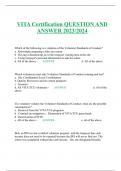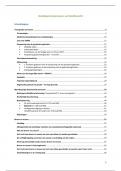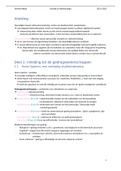Resume
Samenvatting Beleidsinformatiesystemen - Quiz: introduction, UML basics & advanced
- Établissement
- Katholieke Universiteit Leuven (KU Leuven)
Per hoofdstuk, per test dat op de computer gemaakt moet worden, staan in dit document alle vragen en antwoorden: het is dus ook handig om de oefeningen samen te hebben, want al deze oefeningen moet je kunnen op het examen Het document bevat 21 pagina's en gaat over: Introduction, UML basics and a...
[Montrer plus]












